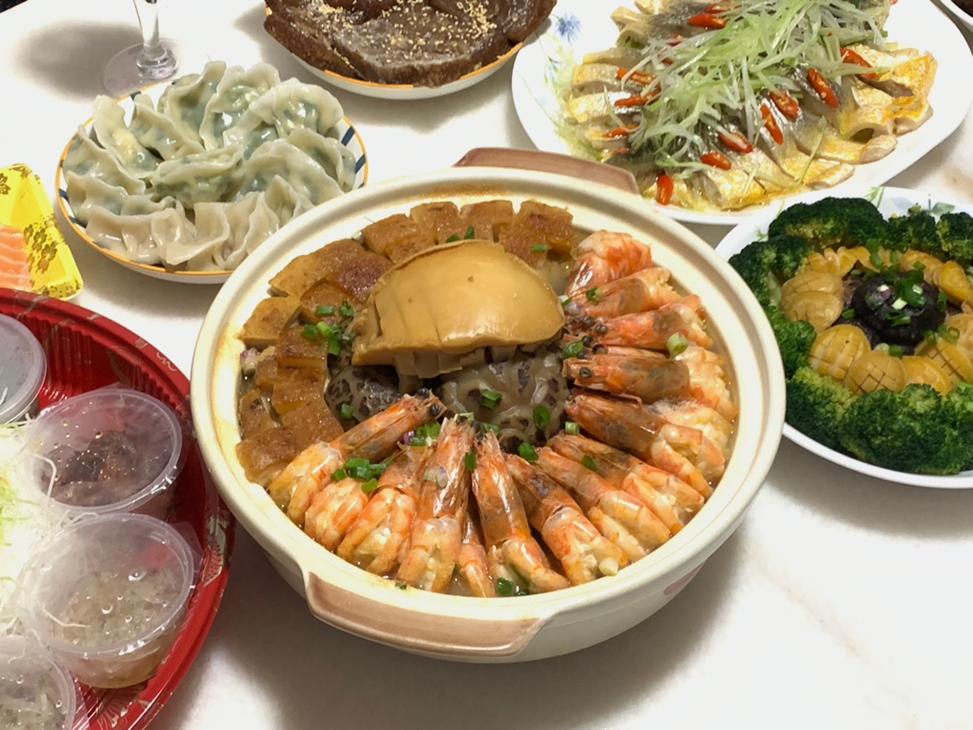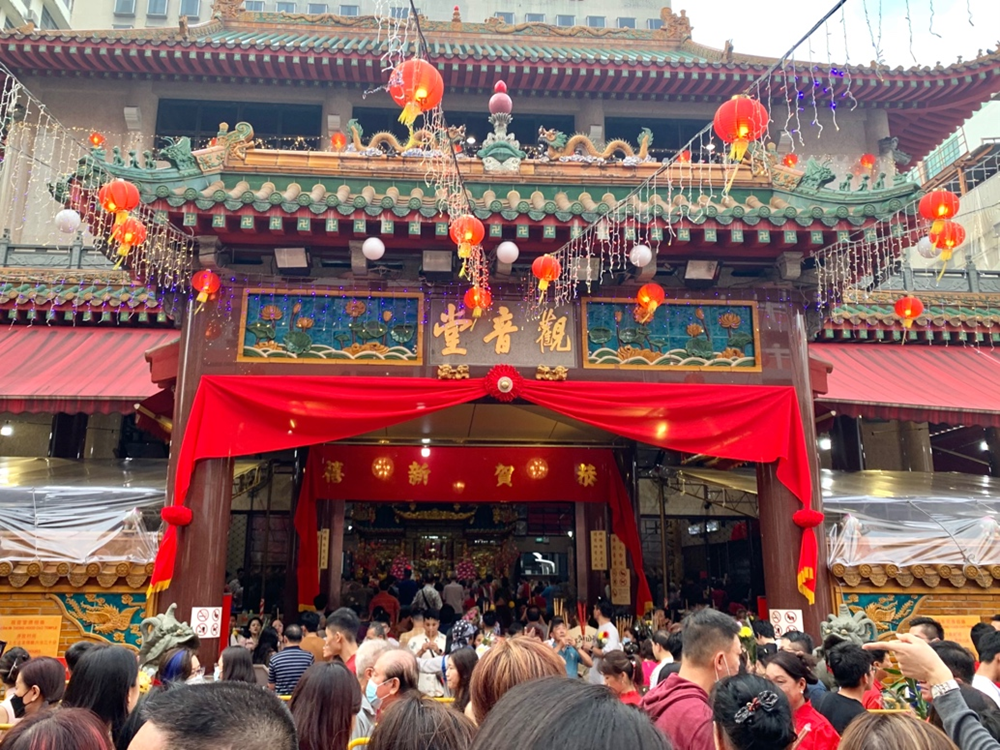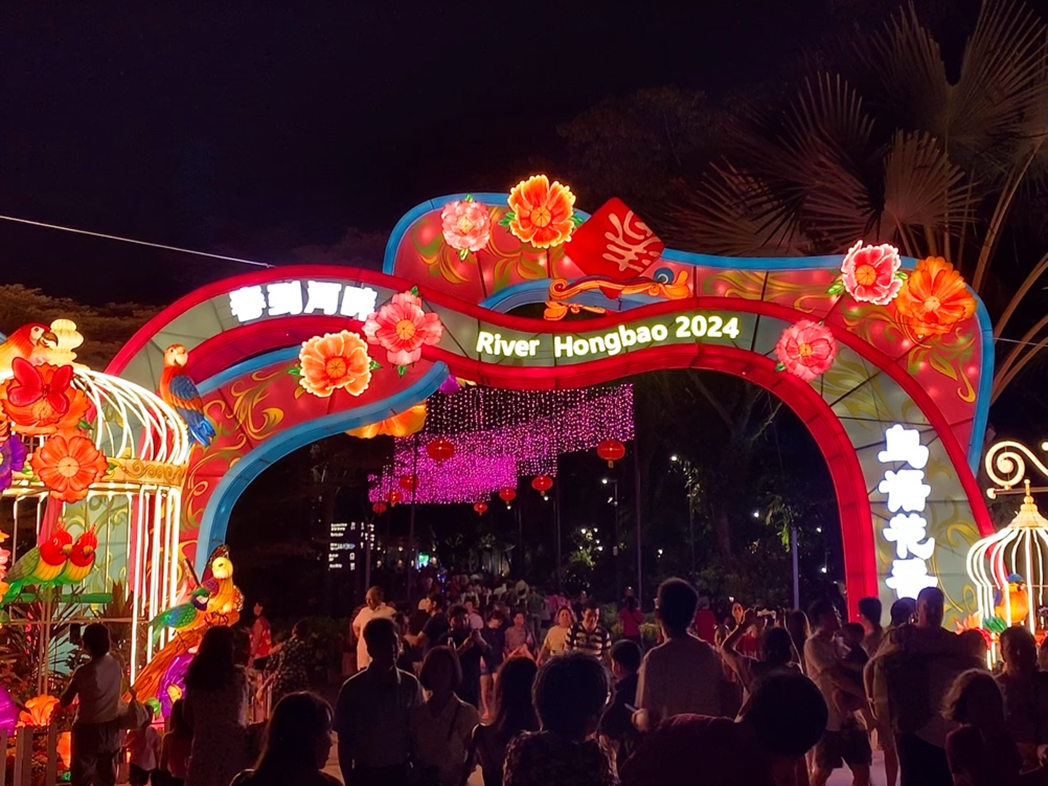By Wu Jiayun
Peking University, February 17, 2024: Streets lined with lanterns and decorations featuring the Chinese dragon, also known as the "loong," traditional Chinese songs blasting in malls, the Chinatown area bustling with vendors offering the best deals for Chinese New Year treats … These are the sights and sounds of the 2024 Chinese New Year season in Singapore.
As a multiracial and multicultural country with ethnic Chinese making up over 75% of the population, Singapore celebrates the festivals of many cultures, including the ongoing Chinese New Year (CNY). For my family, the CNY celebration begins way before the actual occasion. In the week leading up to Chinese New Year, we visit markets to buy new festive blossoms like bamboo and peonies, local snacks like pineapple tarts, bak kwa (Chinese jerky), Nonya kueh (a traditional sweet in Singapore), and red-coloured decorations for the house. We also made dumplings ahead of the reunion dinner, as dumplings symbolise abundance and wealth in Chinese culture.
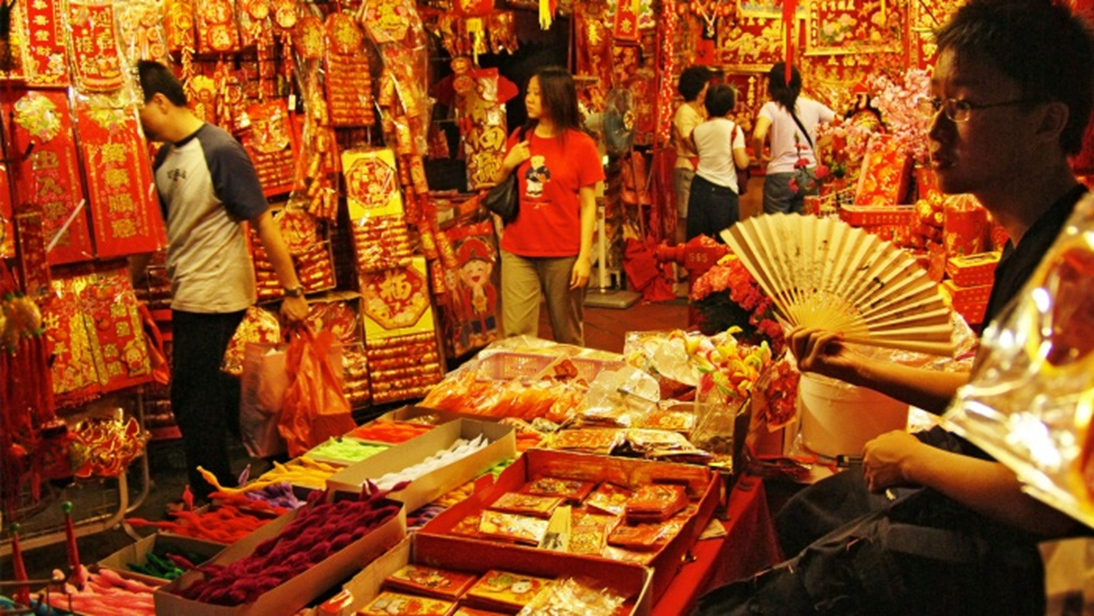 Vendors selling Chinese New Year-themed decorations at Chinatown, Singapore
Vendors selling Chinese New Year-themed decorations at Chinatown, Singapore
Typically, the first two days of Chinese New Year are reserved for gatherings with friends or extended families. However, as many of our relatives are in China, my family opted to spend time as a unit of four. These are some must-do festivities on CNY as a Singaporean Chinese family:
1. Lohei
Yusheng, the dish used in the popular tradition of Lohei
Literally “to pick up” (捞起) in Cantonese, Lohei refers to the act of tossing up a colourful raw fish salad, in order to welcome greater prosperity in the year ahead. The dish itself is known as yusheng (鱼生), a mixture of thinly sliced raw fish and shredded vegetables. Seasonings and condiments that are known to be “auspicious” are also added, such as honey which symbolizes sweetness and bliss.
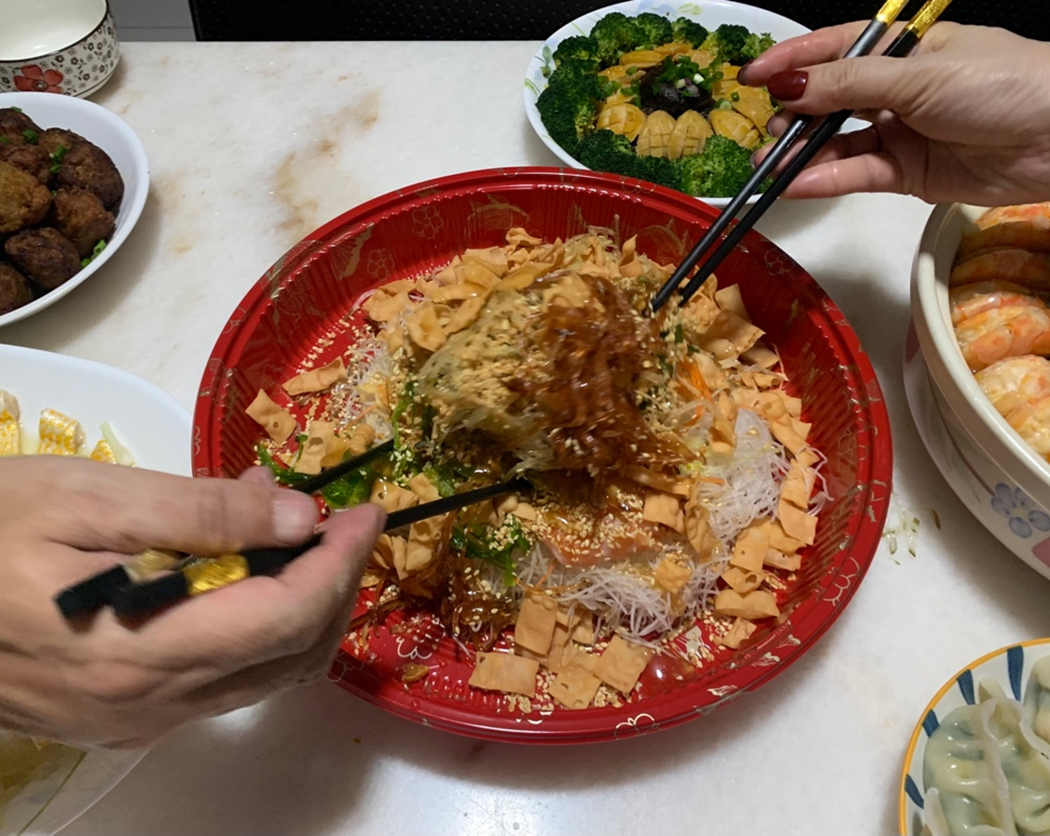 Lohei in action
Lohei in action
As families and friends gather to lohei, ingredients are tossed in one by one, and auspicious phrases are called out. For example, when raw fish is added, people shout out “年年有余” (abundance throughout the year). Another go-to phrase to call out is “Huat ah!”, which literally means “to prosper” in Hokkien, one of the main dialects spoken by Singaporean Chinese.
2. Reunion dinner and a night of poker games
Every family has its own rendition of a reunion dinner spread, and my family is no exception. As first-generation immigrants from China, my parents have adopted a fusion of local Singaporean traditions and traditional Chinese traditions from their hometowns.
This year, our spread included a total of eight dishes—an auspicious number—with the main dish being the poon choi (盆菜), literally “basin dish” as it is often served in a very big pot.
Poon choi
With origins in Hong Kong SAR and Guangdong Province, poon choi is a CNY favourite amongst Hakka and Cantonese communities around the world, including Singapore. Poon choi is traditionally served as a communal meal during special occasions, hence is heavy on meats and seafood. My family makes poon choi in the traditional way, placing Chinese radish at the bottom, then layering the dish with mushrooms and pork in the middle, before topping the pot off with prawns and abalone.
We also ate homemade dumplings during reunion dinner, a tradition that is popular in Northern China where my father came from. Every side dish has to bear an auspicious meaning, such as broccoli (花菜) which sounds similar to the Chinese phrase for “good fortune (发财),” and sticky rice cake, or nian gao (年糕), which sounds like “getting higher year on year” and symbolizes progress in the year ahead.
After reunion dinner comes the tradition to stay up past midnight on the eve of CNY, also known as shousui (守岁). It is said to bring longevity to one’s parents. Thus, to beat the food coma, my family usually gathers to play poker games and watch television. When the clock strikes midnight, my brother and I convey our well wishes to our parents, and they give us red packets in return.
3. Praying for Tai Sui at Waterloo Street
People queue outside Kwan Im Thong Hood Cho Temple on CNY
Although Singapore is a secular state, Buddhism is the largest religion in Singapore. As of 2023, 26% of Singaporean adults identify as Buddhist. On the first day of the Chinese New Year, going to the temple to seek blessings is an important ritual for Chinese Buddhists, and the Kwan Im Thong Hood Cho Temple located on Waterloo Street is the most popular destination.
This ritual is known as praying for Tai Sui. In Chinese astrology, Tai Sui means the Guardian God of the year, hence appeasing Tai Sui is said to protect one’s fortunes for that year. As an atheist, visiting the temple to me is a festivity that allows me to wish for peace and health, as well as reminds me to do good deeds in the new year.
4. Touring River Hongbao
River Hongbao is an annual Chinese New Year-themed carnival in Singapore
After visiting the temple, my family took a walk around the Gardens by the Bay, where River Hongbao, the annual Chinese New Year carnival in Singapore, was held. Boasting magnificent Chinese New Year decorations and an exciting line-up of dance and musical performances, River Hongbao filled the area with a festive atmosphere.
A beloved fixture popular with locals and tourists alike, River Hongbao has been held every year since 1987. During the day, there was a Chinese New Year-themed floral display. When my family went, massive glowing lanterns of the God of Fortune figure and dragon lit up the night, ending off the Chinese New Year holiday on a bright and prosperous note.
The author is an undergrad at Peking University's School of International Studies and an editor with PKU News; she hails from Singapore.
Photos by: Wu Jiayun, VisitSingapore.com
Edited by: Dennis Meng
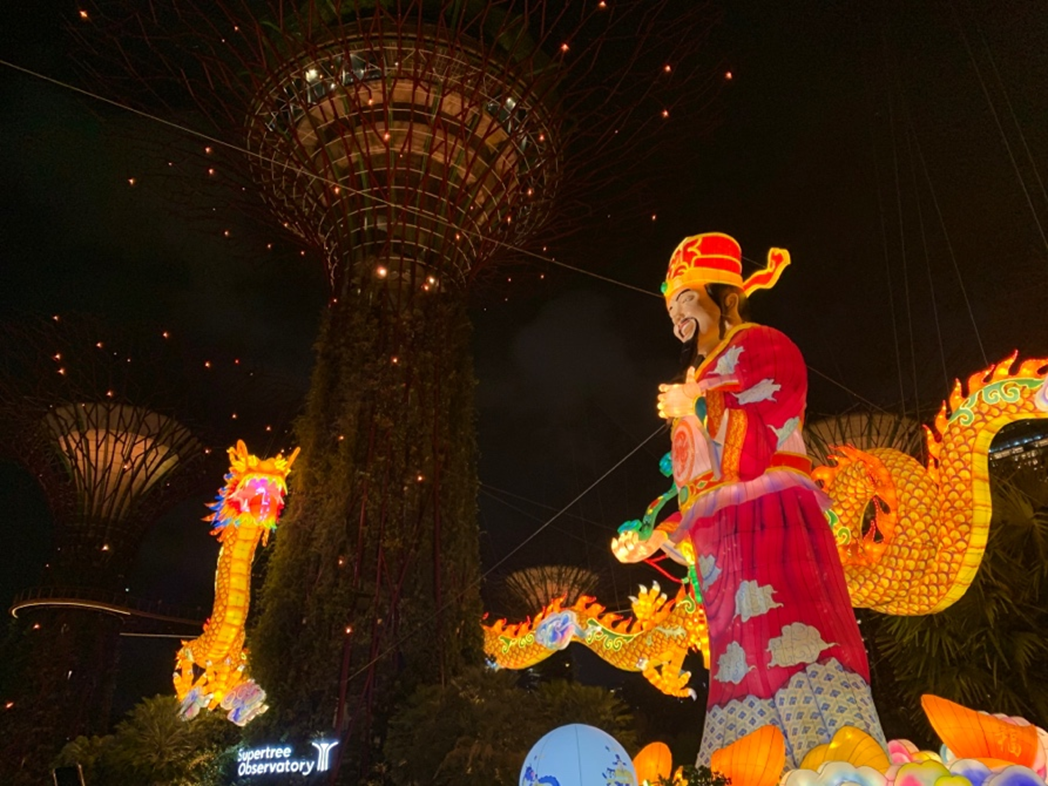
 Vendors selling Chinese New Year-themed decorations at Chinatown, Singapore
Vendors selling Chinese New Year-themed decorations at Chinatown, Singapore
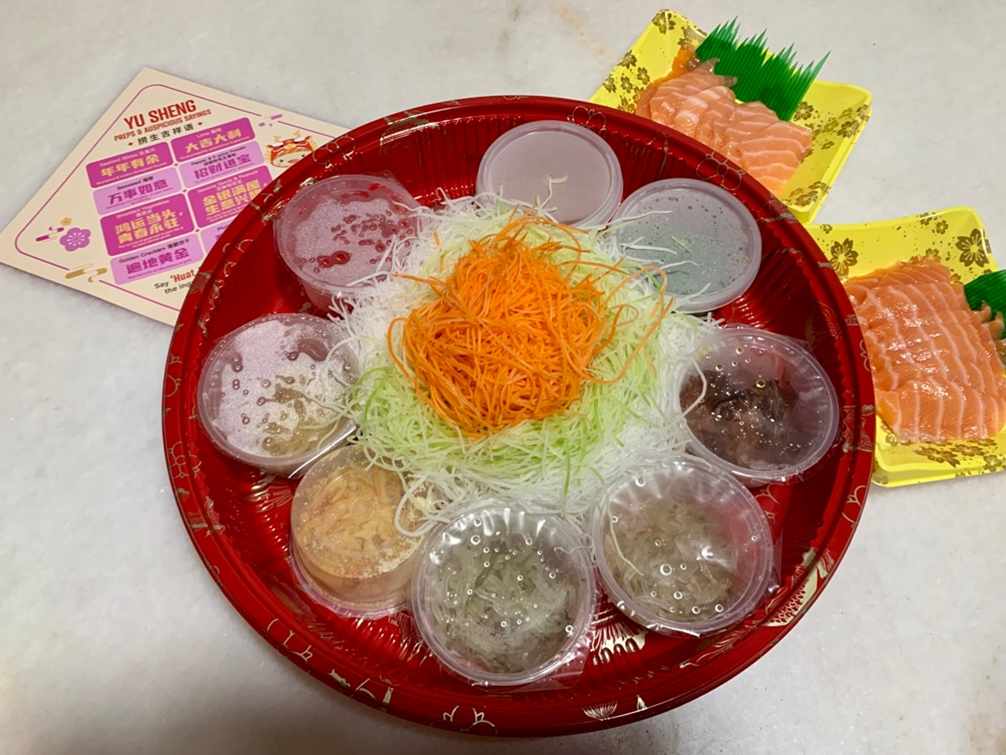
 Lohei in action
Lohei in action
